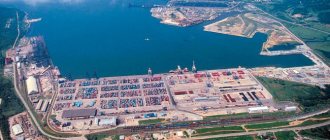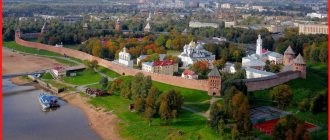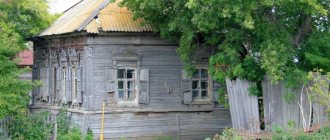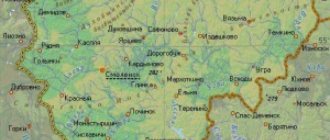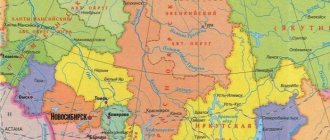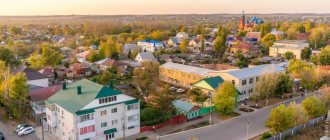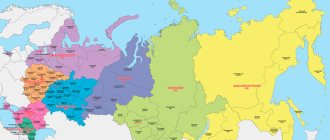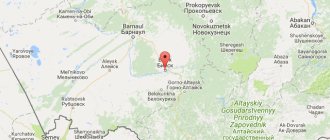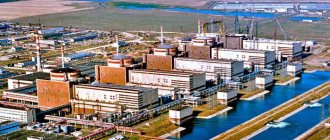What holiday is it today?
09 February 2022, Wednesday
Today are holidays and events: Aeroflot's birthday International Dentist Day Memorable date in Russian military history: The feat of the cruiser Varyag Tomorrow: Diplomat's Day
Today is an Orthodox holiday: Transfer of the relics of St. John Chrysostom, Archbishop of Constantinople... Tomorrow: St. Ephraim the Syrian. Venerable Ephraim of Novotorzhsky. Venerable Ephraim of Pechersk, Bishop of Pereyaslavl. Venerable Theodosius of Totem, the head and founder of the Spasosumorin monastery...
Today is a national holiday: Chrysostom's Fire... Tomorrow: Ephraim's Day...
Seasons
Seasons, four periods of the year (spring, summer, autumn and winter) characterized by certain average temperatures. The period during which the Sun passes through one of these sectors is called the season. Spring in the Northern Hemisphere and autumn in the Southern Hemisphere begin when the Sun passes through the initial circle of declination and its right ascension is 0° (vernal equinox). Summer in the Northern Hemisphere and winter in the Southern Hemisphere occur when the sun's right ascension is 90° (summer solstice). Autumn in the Northern Hemisphere and spring in the Southern Hemisphere begin when the sun's right ascension is 180° (autumnal equinox). The beginning of winter in the Northern Hemisphere and summer in the Southern Hemisphere is considered to be the winter solstice, when the direct ascension of the Sun is 270°... Next: Seasons. Russian folk calendar. Monthly words...
Geographical location, rivers, lakes, relief
The map of Russia shows that the Saratov region is located in the southeastern part of the European territory of the Russian Federation. The subject borders the Orenburg, Samara, Voronezh, Tambov, Volgograd, Ulyanovsk and Penza regions. The eastern border of the region is the state border of the Russian Federation and Kazakhstan.
Districts of the Saratov region
The subject consists of 38 districts. The satellite map of the Saratov region shows that the Volga divides the region into Left Bank and Right Bank parts. In the north of the subject there is the Khvalynsky district, in the south - Aleksandrovo-Gaisky, in the west - Romanovsky, in the east - Perelyubsky.
The largest by area is the Dergachevsky district (4500 km2), the smallest are Baltaysky and Romanovsky with the same area of 1300 km2.
Natural and climatic conditions
The climate of the region is continental with frosty winters and dry summers. The average temperature in the winter months is -10 to -14ºC, but can drop to -35ºC. Summer in the region lasts four months. Average summer temperatures are +21 - +24ºC, in the hottest weather the air warms up above 30ºC.
Most of the territory is occupied by chernozem steppes; in the southeast there are semi-deserts.
In addition to the Volga, water resources are represented by 180 small rivers.
Folk calendar about every day
Every day one season always replaces another and this determines a person’s way of life. In connection with this, a folk calendar was formed in which there were practically no nameless, unmarked days. Every day was special, had its own purpose. All this was determined by climate conditions and astrological phenomena.
A calendar is a system for counting periods of time. The first calendars arose a long time ago, in ancient times, because there was a need to measure time. The word calendar comes from the Latin words caleo - to proclaim and calendarium - debt book. This is due to the fact that in Ancient Rome the beginning of each month was especially proclaimed, and because it was customary to pay debts on the first day of the month. Different peoples counted time differently. Some calendars are based on the changing phases of the moon - lunar calendars; in others - the change of seasons - sunny; in others, the length of the year was coordinated with the change of seasons, and the counting of months was associated with the phases of the Moon. Such calendars are called lunisolar.
In Rus', the calendar was called a monthly calendar. Every day, the month book covered the entire year of peasant life, “describing” day by day, month after month, where each day had its own holidays or weekdays, customs and superstitions, traditions and rituals, natural signs and phenomena. The cyclical nature of the calendar is reminiscent of human life, where spring is youth, summer is heyday, autumn is the time of harvesting fruits (it’s good if there are some, otherwise you can live your life without collecting fruits), winter is the time of wisdom and peace. This cyclicality and rhythm determined the way of life of the farmer. The folk calendar was an agricultural calendar, which was reflected in the names of the months, folk signs, rituals and customs. Even the determination of the timing and duration of the seasons is associated with real climatic conditions. Hence the discrepancy between the names of the months in different areas... Next: Folk calendar...
The Saratov region is a land of diversity
The Saratov region is a wonderful region located in the southeast of the European part of Russia, in the northern part of the Lower Volga region, and is part of the Volga Federal District of the Russian Federation. The Saratov region borders on the Volgograd region in the south, on the Tambov region on the southwest, on the Voronezh region on the west, on the Penza, Samara, Orenburg and Ulyanovsk regions on the north, and on the east on the Republic of Kazakhstan. The administrative center is the city of Saratov. From west to east the territory extends for approximately 570 km, and from north to south for approximately 330 km. It is interesting that the full-flowing Volga River, flowing, divides the Saratov region almost in half into two parts: left and right.
Saratov, Volga embankment
This region pleases the eye with its open spaces and picturesque landscapes; it has unique beauties that are not repeated anywhere else. Here are the Volga Upland, the Trans-Volga steppe plains, and the deserted Caspian Lowland.
The climate of the Saratov region is temperate continental. It is characterized by aridity and great weather variability - droughts occur on average once every three years. The continental climate increases from north to southeast - the amplitude of air temperature fluctuations increases and the amount of precipitation decreases. In the Left Bank region the climate is more arid, the weather is hot in summer with little precipitation, and winter has little snow with low relative humidity. The climate of the Right Bank of the Saratov region is milder, with more rainfall, than in the Left Bank.
Summer in the Saratov region lasts about four months, the weather is usually partly cloudy and dry. Precipitation falls unevenly, in the form of showers with thunderstorms. Often the entire monthly precipitation amount can consist of one or two rains. The hottest month is July, with an average daily air temperature of +25 degrees, but often from the beginning of July to mid-August there is hot weather with temperatures not lower than +30 degrees. At the same time, strong dry winds are observed in the Left Bank region, causing droughts.
Winter in the Saratov region begins at the end of November and lasts about four months. The weather in winter is quite frosty: from -10 degrees in the Right Bank to -14 degrees in the Left Bank, but frosts down to -30 degrees, as well as thaws, often occur. The coldest month of winter is January, with an average daily temperature of about -12 degrees. In February the weather is windy, with frequent snowstorms.
The diversity of the flora of the Saratov region is influenced by landscape zones: steppe, forest-steppe and semi-desert. Starting from the northern part of the Saratov region, there are oak forests, steppes, mixed forest cover and even deserts. All this splendor of natural diversity continues for 200 km to the south of the region. Large but uneven areas, mainly on the Right Bank, are occupied by forests, where there are 1,600 species of bush and tree species. In the oak forests you can find wild pear and apple trees, rowan, birch, linden, sycamore maple, ash and elm.
The fertile chernozem soil of the steppe zone, the uniformity of heat and light make it possible to grow the best durum wheat in the country, for which the Saratov region is often called the birthplace of strong cereals.
The nature of the Saratov region is truly picturesque
Due to active cultivation of the land, many plant species have been lost, but still in untouched virgin zones, on slopes and in ravines, carnations, yellow chamomile, various types of feather grass, alfalfa, wormwood, and astragalus are found. But the most common are sweet clover, yarrow, speedwell and tansy.
Along the main rivers - the Volga, Khopra, Izgir and Tereshka - floodplain forests have formed, where there are both poplar and willow. But the main feature is that relict forests are widespread in the region, and this has a positive effect on the preservation of flora. For this purpose, nature reserves and national parks were created: “Moss Swamp”, “Floodplain Oak Forest”, “Tulip Steppe”, etc.
The fauna of the Saratov region, just like the flora, depends on natural areas and human activity. For example, in the steppe zone of the Lower Volga region, before active cultivation of the land, the permanent residents were the saiga antelope, the tarpan horse, the roe deer and the red deer. But, alas, today, except for the saiga, it is unrealistic to meet these mammals. Small rodents are often found: ground squirrels, voles, hamsters, pieds, jerboas, steppe choruses. Feathered representatives - cranes, larks, bustards. Forest-steppe forests and oak groves are inhabited by deer, elk, foxes, wolves, hedgehogs, squirrels, and hares. Gophers and gerbils live in the semi-desert zone. Interesting fact: the Volga River, as a border, does not allow rodents to spread; they live only in the Volga region.
The mixed flora and fauna of the European and Asian parts of the continent gives the region a unique charm. Moreover, 400 out of 1,700 plant species growing on the fertile soils of the Saratov region are listed in the Red Book. The region boasts 70 species of mammals and more than 250 subspecies of birds.
The Saratov region has several natural monuments protected at the state level. Here are just a few of them.
Pine forest in a steppe oasis . An extraordinary natural phenomenon is a pine forest among the steppe plain. An amazing feature of this reserve is the very fact of its existence: in the steppe zone, nature suddenly created an incredible contrast with the environment - as if it had transferred the Siberian forest to the center of the sands. For all its incredibleness, the pine forest of the Volsky region has pine trees that are over 100 years old and at least 15 meters in height.
Despite the presence of obvious signs of the natural origin of the pine forest, there is a legend among residents about its artificial appearance. Allegedly, a certain nobleman Kokuev ordered the territory to be planted with pine trees in the second decade of the 19th century.
The Ivanovo Field tract is a tulip field with an area of 150 hectares. On the territory of this natural monument, one of the largest populations of the Gesner tulip is noted - a species listed in the Red Book of the Saratov Region with the category and status of “endangered”.
Tract "Ivanovo Field"
The Karaman Delta and the Volga itself create a bizarre network of an infinite number of channels, islands, and bays, which stretches down the Volga along the left bank for tens of kilometers. Herons, ducks, swans, wild boars, beavers - these birds and animals inhabit the Black Waters reserve , which can well be called the Saratov “Amazon”. This large massif of the Volga floodplain on the left bank, located in two districts - Marksovsky and Engelssky, is considered one of the best places for fishing in the region.
At the junction of the Middle and Lower Volga regions, in the north of the Saratov region, the largest national park in the Lower Volga region is located - Khvalynsky . The uniqueness of its nature is due to the fact that the Khvalynsky Mountains, within which the park is located, are the highest in the Volga Upland. The park was formed in 1994 to preserve the unique natural complexes of the Khvalynsky chalk mountains of the Volga Upland and monuments of the historical and cultural heritage of this region. In addition to the natural and recreational resources of the park, one cannot help but say about the historical and cultural uniqueness of the protected zone, first of all, about the historical city of Khvalynsk. This is a city with preserved historical architecture, sanatoriums on the site of Old Believer hermitages, local history and art museums, as well as ponds and springs, apple orchards.
The valley of the Khoper River in the Saratov region has finally become a natural monument. The area of the new specially protected natural area is 1,600 hectares. The goal is to preserve a unique complex of untouched nature of old floodplain oak forests. Tourists are attracted here by the most beautiful places in the Khopra Valley, picturesque shores, pristine sandy beaches, warm, crystal clear water, excellent fishing, pine forests on high terraces, and piercingly clean air. The Khopra Valley is covered with rich broad-leaved forests with linden and elm; in the middle reaches there are also pine groves. Khopr's path to the Don is long and winding. There are often islands in the channel, and between them, in the channels, there are rapids, behind which whirlpools can arise.
Khoper River
Marfinsky Park was created at the estate of Count Silvan Vladislavovich Korevitsky in the village of Marfino in 1905–1910. Having married the daughter of the landowner Belyaev, Maria Dmitrievna, the young count decided to build a beautiful park in honor of this event. To do this, he hired gardeners from France who selected trees and shrubs for the future park. The main alley, according to legend, was planted in the form of the Korevitsky family monogram - a curved letter “K”. Canals were dug from the Kolyshley River to irrigate the park. Alleys, clearings, and a pond with strange fish appeared. In the center of the pond, on an island, there was a gazebo, where a brass band made up of peasants played, and artists performed, entertaining the guests. Japanese-style openwork bridges led to the island. And in the clearing in front of the gazebo there were flower beds planted with flower seeds brought from Japan and China. Marfinsky Park is the most significant parkland in the region (there are more than 400 trees) and one of two places where relict fir is represented in large numbers.
Marfinsky Park
The Nizhne-Bannovsky natural monument occupies a vast part of the southern outskirts of the Saratov Volga region. The natural complex as a whole and its individual components are unique. Due to the inaccessibility for economic activity in certain parts of the reserve, little changed natural complexes have been preserved, reflecting the typical and unique features of these places. For example, in the Juniper ravine the only population of Cossack juniper in the Saratov region grows. On the upper remnant massifs of the Volga Upland, on the steep, steep slopes of the Volga coast, in deep ancient gullies, typical and currently extremely rare areas of virgin and old-fallow steppes have been preserved.
In 2012, the remains of a dinosaur were found here, and not just any herbivorous diplodocus, but a mosasaurus. This once again confirms the theory that in the place where the Saratov region is now located, there was once a large ancient sea, since mosasaurs are dinosaurs that lived in the seas and oceans. Immediately behind the Juniper ravine, Mount Syrt rises 217 meters. This mountain is famous for the fact that on its slopes rocks from almost all centuries of the Upper Cretaceous period are exposed, or, as geologists say, the entire Upper Cretaceous section.
The unusually beautiful bank of the Volga from the village of Melovoe through the village of Nizhnyaya Bannovka and to the village of Belogorskoye is also called the “Bank of Plesiosaurs”. One of the most famous finds here was made in the summer of 1981 - a large, almost two-meter skull of an ichthyosaur.
Natural monument "Nizhne-Bannovsky"
The natural resources of the region delight visitors with their beauty. The Volga River itself, with its sandy beaches, hundreds of islands and channels, opportunities for fishing and hunting, constitutes the enormous wealth of our land. In the Saratov region there is a place where the great river is wide, like a boundless sea.
REFERENCE
On March 2, 1945, by a special resolution of the Council of People's Commissars of the USSR, the Saratovgaz . He became a reliable executor and coordinator of all work related to the widespread gasification of the regional center. In the shortest possible time, a reliable system of underground gas pipelines, street and house networks was built.
In the 1940s, the priority tasks were to lay gas pipelines and supply gas to industrial enterprises. Over four years, the length of the networks increased more than fivefold and amounted to 112.87 km; 77 factories in the city of Saratov operated on gas.
In 1949, by order No. 234, the Ministry of Economic Affairs of the RSFSR approved the project for the first stage of gas supply to Saratov. In the same year, the general gas supply project for the city was approved. By 1951, the length of gas networks increased to 245 km, and the supply of gas for domestic needs tripled compared to 1945. In 1951, the Saratovgaz trust was renamed Saratovgorgaz. In 1994, the Saratovgorgaz trust was transformed into OJSC Saratovgaz, now JSC Saratovgaz.
The company is part of a group managed by Gazprom Mezhregiongaz LLC. The main activity is uninterrupted, safe, accident-free transportation of gas to consumers.
JSC Saratovgaz is a gas distribution network with a total length of 2898.5 km, 1054 gas control points and cabinet installations, 332 electrochemical protection installations. The production capacity of the gas distribution organization makes it possible to supply 394,149 apartments, 144 industrial and 2,828 municipal enterprises with natural gas. The company operates 437.68 km of underground steel gas pipelines with a service life of 40 years or more. The amount of gas transported through gas distribution networks is 1845.453 million m3 per year. All hydraulic fracturing units are equipped with automated control systems for gas distribution technological parameters. The company employs more than 850 people.
Fishing calendar for every day
The fishing calendar should not be taken as an absolutely indisputable truth. Fish biting is greatly influenced by a whole range of natural factors, as well as the influence on the nature of man himself. You must not forget that the fish’s bite depends and is determined not only by the calendar dates and biological cycles of their life, reflected in the calendar, but also, no less, by the state of their habitat; the bite also depends on weather conditions: air and water temperatures, cloudiness, wind direction and strength, etc... Next: Fishing calendar...
Orthodox calendar about every day
Orthodox calendar: Orthodox, Church and Christian holidays.
The church year is an alternation of weekdays and holidays. On weekdays, a person is called to work “by the sweat of his brow to earn his bread.” Holidays are given in order to feel liberation, to rise above the bustle and routine of the world, to feel involved in the highest of worlds, “where there are no illnesses, sorrows and sighs, but endless life.” Since ancient times, holiday cycles have been associated with the seasons. The pagans associated them with the worship of the forces of nature, the cult of which in the Old Testament was replaced by gratitude to the Creator for the universe. And although the connection between holidays and the seasons has not completely lost its power, since God is present in everything, in the plant and animal world, in human works, it nevertheless faded into the background, giving way to a spiritual foundation built on the Sacred Scriptures. The history of Orthodox holidays dates back to the times of the Old Testament. Each of the Orthodox holidays is dedicated to the remembrance of the most important events in the life of Jesus Christ and the Mother of God, as well as the memory of saints... Next: Orthodox calendar...
Map of the Saratov region with cities, districts and villages
| 1. Saratov | 13. St. Petersburg s. (Petersburg district) | 25. Dukhovnitskoe rp (Dukhovnitsky district) | 37. Shikhany city |
| 2. Bald Mountains rp (Lysogorsk district) | 14. Tatishchevo rp (Tatishchevsky district) | 26. Petrovsk | 38. Bazarny Karabulak rp (Bazarno-Karabulak district) |
| 3. New Burasy district (Novoburassky district) | 15. Turki rp (Turkovsky district) | 27. Pugachev city | 39. Pinerovka district (Balashovsky district) |
| 4. Ozinki rp (Ozinsky district) | 16. Mokrous rp (Fedorovsky district) | 28. Rtishchevo city | 40. Baltai p. (Baltaysky district) |
| 5. Mountain station (Krasnopartisan district) | 17. Privolzhsky town (Engels district) | 29. Khvalynsk | 41. Voskresenskoye village (Voskresensky district) |
| 6. Novouzensk city (Novouzensky district) | 18. Sovetskoe rp (Sovetsky district) | 30. Marx Mr. | 42. Atkarsk city (Atkarsky district) |
| 7. Kalininsk city (Kalininsky district) | 19. Pushkino district (Sovetsky district) | 31. Krasnoarmeysk | 43. Arkadak city (Arkadak district) |
| 8. Ershov city (Ershovsky district) | 20. Rivne r.p. (Rivne district) | 32. Atkarsk city | 44. Svetly village |
| 9. Chapaevka checkpoint (Ershovsky district) | 21. Romanovka district (Romanovsky district) | 33. Balakovo city | 45. Sokolovy village (Saratov district) |
| 10. Ivanteevka village (Ivanteevsky district) | 22. Samoilovka district (Samoilovsky district) | 34. Balashov city | 46. Alexandrov-Gai p. (Alexandrovo-Gaisky district) |
| 11. Perelub s. (Perelyubsky district) | 23. Stepnoe town (Sovetsky district) | 35. Volsk city | 47. Dergachi district (Dergachevsky district) |
| 12. Kamensky town (Krasnoarmeysky district) | 24. Ekaterinivka rp (Ekaterinovsky district) | 36. Engels |
Satellite map of the Saratov region
Switching between a satellite map of the Saratov region and a schematic one is done in the lower left corner of the interactive map.
Saratov region - Wikipedia:
Date of formation of the Saratov region:
December 5, 1936
Population of the Saratov region:
2,395,111 people.
(January 1, 2022) Telephone code of the Saratov region:
845
Area of the Saratov region:
100,200 km²
Vehicle codes of the Saratov region:
64,164
Districts of the Saratov region:
Aleksandrovo-Gaisky • Arkadaksky • Atkarsky • Bazarno-Karabulaksky • Balakovsky • Balashovsky • Baltaysky • Volsky • Voskresensky • Dergachevsky • Dukhovnitsky • Ekaterinovsky • Ershovsky • Ivanteevsky • Kalininsky • Krasnoarmeysky • Krasnokutsky • Krasnopartizansky • Lysogorsky • Marksovsky • Novoburassky • Novouzensky • Ozin Chinese • Perelyubsky • Petrovsky • St. Petersburg • Pugachevsky • Rovno • Romanovsky • Rtishchevsky • Samoilovsky • Saratovsky • Soviet • Tatishchevsky • Turkovsky • Fedorovsky • Khvalynsky • Engelssky.
Cities of the Saratov region - list of cities in alphabetical order:
Population of cities in the Saratov region in 2017.
Arkadak city
founded in 1721.
The population of the city is 11986 people. The city of Atkarsk
was founded in the 18th century.
The population of the city is 25,384 people. The city of Balakovo
was founded in 1762.
The population of the city is 191,260 people. The city of Balashov
was founded in the 18th century.
The population of the city is 77,391 people. The city of Volsk
was founded in 1690.
The population of the city is 63,947 people. The city of Ershov
was founded in 1893.
The population of the city is 19993 people. The city of Kalininsk
was founded in 1680.
The population of the city is 15841 people. The city of Krasnoarmeysk
was founded in 1768.
The population of the city is 23,296 people. The city of Krasny Kut
was founded in 1837.
The population of the city is 14,718 people. The city of Marks
was founded in 1765.
The population of the city is 31,788 people. The city of Novouzensk
was founded in 1760.
The population of the city is 15929 people. The city of Petrovsk
was founded in 1698.
The population of the city is 29,376 people. The city of Pugachev
was founded in 1764.
The population of the city is 41,056 people. The city of Rtishchevo
was founded in 1666.
The population of the city is 39,390 people. The city of Saratov
was founded in 1590.
The population of the city is 843,460 people. The city of Khvalynsk
was founded in 1556.
The population of the city is 12556 people. The city of Shikhany
was founded in 1928.
The population of the city is 5665 people. The city of Engels
was founded in 1747. The population of the city is 225,752 people.
Saratov region
occupies the southeastern territory of the European part of Russia. The Saratov region borders on the Volgograd, Voronezh, Tambov, Penza, Samara, Ulyanovsk and Orenburg regions, as well as Kazakhstan.
The administrative center of the region is Saratov
, located on the Volga. On the other side of the Volga from Saratov is the city of Engels, which is connected to Saratov by the Saratov Bridge, which at the time of its opening was the longest bridge in Europe. After his historic first flight into space, Yuri Gagarin landed near Engels, and today a special memorial is erected at this site.
On the Volga within the region there is a cliff that became known as Stepan Razin's cliff. In addition to being one of the region's most stunning natural attractions, there are many interesting legends associated with the area.
Previously known as Pokrovsk, the city was renamed Engels
in honor of the German socialist and co-author of the Communist Manifesto. Until World War II, the city was the center of Russia's Volga German population - ethnic Germans who settled around the Volga during the reign of Catherine the Great.
What to see in the Saratov region
A real gem of the region is the Volga Switzerland National Park, whose area is 35 hectares. This is a unique place with playgrounds, sanatoriums and recreation areas. In total, there are more than 120 natural monuments in the Saratov region.
There are a huge number of beautiful buildings and architectural masterpieces in the region, but especially worth noting is the building of the Saratov State Philharmonic, whose design resembles a fairy-tale castle. The region is also known for its ancient estates. There are 18 of them preserved in this region, and all of them were previously the possessions of representatives of the Russian aristocracy.
Russian folk calendar for every day
The word “sign” comes from the word “notice”, i.e. observe. As a result of observing what happens around a person every day, he accumulates life experience. This knowledge was passed down from generation to generation, carefully preserved and people trusted it as a sacred book. Many signs have come to us from the depths of centuries without losing their knowledge. Each of us is free to choose: to dismiss all this as an absurd superstition or to take a closer look at the signs and take the centuries-old experience of generations more seriously. Most of us, when taking exams, ask them to scold them, boasting about some kind of good fortune or luck, spit so as not to jinx them or knock on wood, take a detour if a black cat crossed the road, are afraid of the number 13 and much more. And who among us does not have lucky things, numbers? Who has never resorted to the help of fate at least once in their life, who has not believed in secrets? It’s as if everything connected with signs is hidden somewhere deep in our subconscious. Often we remember them mechanically, unconsciously, or just as a joke. But, undoubtedly, the signs contain a lot of accurate knowledge and practical wisdom of our ancestors. They cover all the characteristic, often difficult to perceive, natural phenomena. Signs have preserved a lot of what was in old folk holidays and customs; they help predict the weather, grow crops... Next: Folk signs...
General information about the Saratov region
Distinctive features .
The lands of the Saratov region began to be populated in the 17th century, when fortresses began to be built in the Volga steppes to protect against illegal armed groups of Kalmyks, Kyrgyz and other “free travelers.” Saratov itself, thanks to its advantageous position on the Volga River, became a large shopping center, and, simply put, a “roof” for all sorts of peddlers, buffoons, beggars and other homeless people. By the way, an interesting story came out with Saratov. At first it was founded on the left bank of the Volga, near the Saratovka River. But to give the city importance, on all foreign maps it was called nothing less than “Soratoff”. But in fact, there was a very ordinary den of thieves, for which in 1671 it was subjected to state punitive action to restore constitutional order, after which for another seventy years, not only people, but even animals did not live there.
Those who survived and miraculously did not drown during the crossing of the Volga settled in a fortress on the right bank. Thus, a new city appeared, which we now know as Saratov. In 1747, on the site of the old ashes, the Pokrovskaya Sloboda was founded, known to us today as the city of Engels.
Monument to the Saratov accordion, or “Boyanist”. Photo by bokaenko (https://fotki.yandex.ru/users/bokaenko/)
During the first five-year plans, factories began to sprout throughout the region like mushrooms after rain. And they produced everything here - tractors, combines, engines, and machine tools. This misunderstanding began to be seriously combated only in the 90s of the last century, as a result of which many of them were closed, and their areas were given over to environmentally friendly and safe shopping centers.
However, many enterprises are still operating, poisoning the environment, and the inaction of housing and communal services to eliminate garbage on the streets makes us talk about an environmental disaster looming in Saratov. Oh yes, we also forgot to mention the RosRAO landfill for radioactive waste disposal, located 12 km from Saratov...
Roller balls are made here
For those who are tired of breathing industrial emissions, there are still several untouched corners left in the Saratov region. These are the Khopersky Nature Reserve, the Khvalynsky National Park, the Atkarsky Nursery, several holy springs such as the White Key and over a hundred more natural monuments.
Khopersky Reserve: “Well, here I am in Khoper!” Photo by Galina (https://fotki.yandex.ru/users/galka-melikova/)
Geographical location . The Saratov region is located in the northern part of the Lower Volga region. It borders 7 regions. In the west these are the Tambov and Voronezh regions, in the north - Penza, Ulyanovsk and Samara, in the south - the Vologda region. In the east, the Saratov region borders on Kazakhstan.
From north to south, the Saratov region is cut by the Volga River, which divides it into the Right Bank and Left Bank parts. Many large and small settlements have grown here, and 11 of them are among the historical cities of Russia.
Night Saratov. Photo by andrey-euseew2011 (https://fotki.yandex.ru/users/andrey-euseew2011)
The relief of the region is flat. The local soils are rich in black soil, and agriculture plays an important role in the economy of the Saratov region. Local farmers are especially trying, supplying their products to markets and stores not only within their region. And there it is in great demand, because the word “farmer” has become a brand in Russia, in no way inferior to the notorious “nanotechnology”.
Population. The Saratov region has a population of 2,496,717 people. The vast majority (85%) are Russians. The second largest number are Kazakhs, fortunately the border with them passes here. It is a pity that the Kazakhs do not value their happiness and strive to escape from their native country, for the independence of which their proud Kazakh people fought for so long. And since the Kazakhs are too lazy to run far, they settle in border regions, like Saratov.
Despite such demographic assistance from Kazakhstan, the population of the region is declining every year. And this is not surprising, because the birth rate here cannot in any way overtake the mortality rate, which, it seems, is not going to give up primacy. A significant role in this is played by the “green serpent”, an addiction to which is increasingly affecting the inhabitants of the region. Accordingly, this affects both people’s health and the increase in drunken homicides. And drunkards don’t have to look for a reason for a long time - if only there was a person, there would always be a reason...
“There are so many golden lights on the streets of Saratov...” Photo by Alex_64 (https://www.skyscrapercity.com/member.php?u=445054)
Crime . The Saratov region is a peaceful and quiet region. No wonder it ranks 65th in the criminal rankings. But this does not mean that at night you can calmly walk through parks and squares - there are plenty of gopniks in Saratov. And the chavs too. Therefore, if you see a young girl approaching you with a bat in her hands, you better move your feet, and quickly.
Unemployment rate. Everything is fine with work in the Saratov region. During the years of Soviet power, so many factories were set up here that it would last for more than one generation. Of course, if they are not stolen. But facts are stubborn things, and they say that unemployment in the Saratov region is 5.38%, which is below the national average. The average salary in the region is 18.4 thousand rubles, which seems to be not much, but in comparison with other regions of the Volga Federal District it is even more or less, because in Udmurtia or Chuvashia salaries are even lower.
SLZ, or Saratov Elevator Plant
Property value. Housing in the Saratov region seems quite affordable. A one-room apartment can be bought for 1.2-1.5 million rubles, and a two-room apartment for 1.5-2.5 million. Quite a lot of housing is being built here, and there are both standard “panel” apartments and luxury complexes. If you do not want to buy an apartment, but prefer to rent a house, then a one-room apartment in Saratov will cost you 12-15 thousand rubles per month.
"Premium class" housing in Engels. Photo by Olga Agureeva
The climate of the Saratov region is continental, loving to present unpleasant surprises. If it's summer, then expect a drought. If it rains, then everything around you gets stuck in such impassable mud that it’s better not to stick your head out of the house. Snow does not fall often in winter, but when it does, it brings a lot of headaches to utility workers, who cannot deal with it until almost spring. Average temperatures throughout the year range from −8°C in February to +22°C in July. The average annual precipitation is 450 mm.
This is not a flood - this happens in Saratov after every rainstorm
Holiday calendar, dates and events of the year
All state and professional holidays in Russia, including significant World and International holidays, and other equally interesting holidays and events about every day.
The holiday has always kept pace with the history of mankind. Social time can be divided into three types: everyday life (weekdays), weekends and holidays. Everyday life is a series of practices repeated day after day and every day (work). Weekends are regular breaks from the rush of everyday life. It is believed that on weekends a person should restore his strength after working days. Day off, non-working day. A holiday is a day of celebration established in honor or in memory of someone or something. A day or series of days celebrated by the church in memory of a religious event or saint... Next: Calendar...
Transport connections of the Saratov region, roads and routes on the map
The region has developed transport links; people can get here by plane, train, or road transport.
State highways pass through the Saratov region:
- Syzran - Saratov - Volgograd (P228);
- Saratov - Voronezh - Kursk (A144);
- Saratov - Penza - Saransk - N. Novgorod (P158);
- Samara - Volgograd (P226).
Rail transportation to Russian cities:
- Astrakhan
- Saint Petersburg
- Novokuznetsk;
- Perm and others.
There are long-distance train routes to Belarus, Bulgaria, and Germany.
The Volgograd-Kazan railway passes through the regional center.
The map of the Saratov region with its districts shows communication routes within the region by buses, electric trains and minibuses.
Prayer book, Orthodox prayers for every day
Prayer is the most powerful means for healing all illnesses - both physical and mental. Prayers can be laudatory or grateful, petitionary and repentant. If we have offended God, sinned, we must ask Him for forgiveness, that is, repent. Such prayers are called repentant prayers. If everything is fine with us, if we and our loved ones are healthy and prosperous, if we have a place to live, something to wear, something to eat, we must glorify and thank God for this. Such prayers are called praise or thanksgiving. If some misfortune, illness, trouble or need happens, you need to ask God for help. Such prayers are called petitionary... Next: Orthodox prayers...
Zodiac, astrological, eastern calendar. Zodiac signs
In ancient times, to establish the calendar, priests used knowledge of the positions of all the planets. Before the reform of Peter 1, the New Year was celebrated on the Day of the Autumn Equinox. On this day, according to ancient legend, the most peaceful treaty was concluded between the Great Race (ancient Slavs) and the Great Dragon (ancient Chinese) and it was approximately 7518 years ago... For the ancient Slavs, the calendar month corresponded to the lunar cycle from new moon to new moon, taking into account such Thus, the relationship of the entire annual cycle with astronomical and natural phenomena. There was no coherent calendar system. The main natural phenomena are still considered to this day to be the days of the solar equinox and solstice - the Slavic holidays Maslenitsa, Kupala, Ovsen and Kolyada. But during the time of Peter 1, all ancient Slavic calendars were abolished and a new Western European calendar from the Nativity of Christ (Julian calendar) was introduced, while the beginning of the calendar was moved to January 1. The Julian calendar (old style) did not take leap days into account and accumulated one extra day every 128 years. After the October Revolution in 1918, the Gregorian calendar (new style) was introduced in Russia, according to which an amendment of 13 days was introduced. The calendar of the ancient Slavs was based on two planets: the Sun and the Moon. And now they don’t use anything at all. The calendar has become static. There is no such thing as the calendar, it turns out, resting on some planet. Nobody even knows about it. There are just some standard numbers, there are months and holidays. The calendar is based on the Sun and Moon. Why is this so? Because these two luminaries influence the Earth. The Earth revolves around the Sun, and the Moon revolves around the Earth. And these two luminaries create the atmosphere on the planet. From here the calendar is built... Next: Astrological calendar...
Territory and geographical location of the Saratov region
It’s no secret to anyone, even to those who didn’t study geography at school, that the Saratov region is part of the Volga Federal District, and the administrative center is the city of Saratov. We will not dwell on this, but will tell you about the geographical location of our region.
The first information about the Saratov region dates back to the 2nd century AD, when geographical data about the Volga appeared. Let us recall that the name of the river used to be “Ra” and it was one of the main ancient Russian trade waterways, along which spices, silk, cotton, salt were transported from south to north, and from north to south - honey, wax, hemp, timber, fur.
Our region was described by many travelers: Marco Polo, Ibn Batut, P. Pallas, N.N. Semenov, I. Falk, I. Lepekhin, S. Nikitin, A. Tillo and others.
Geographical position
From west to east, the territory of the Saratov region extends for 575 km, from north to south - for 330 km. The Volga River flows through the region, which divides the region into 2 parts: Left Bank and Right Bank. The total territory of the region is 100.2 thousand km2, including the Right Bank - 46.0 thousand km2, the Left Bank - 54.2 thousand km2, i.e. The territory of the Left Bank of the region is almost 1.2 times larger than the Right Bank.
The population density is 25 people per 1 km2. The total population of the Saratov region as of 2014 was 2,496,552 people (the population continues to decrease every year). The regional center is the city of Saratov, founded in 1590, with an area of ~0.5 thousand km2.
The Saratov region stretches for 575 km. According to economic zoning, our region is included in the Volga region and ranks second in territory, second only to Volgograd (113.9 thousand km2).
The geographic coordinates of our “small Motherland” are: 50° and 53° north latitude and 42° and 51° east longitude. It occupies the southeastern part of the European Plain and the northern part of the Volga region.
The border regions are: Penza and Ulyanovsk regions in the north, Samara region in the northeast, Orenburg region in the east, Volgograd region in the south, Voronezh and Tambov regions in the west, and the state border with Kazakhstan in the southeast. The total length of the borders is over 3,500 km.
The total territory of the region is 100.2 thousand km2, and the population density is 25 people per 1 km2
Administrative division
Until January 10, 1934, the Saratov region was called a region, since it included the German Autonomous Republic. After the transformation of the Saratov region, on December 5, 1936, the Saratov region was created. Read more about the history of the Saratov region in our article: History of the Saratov region.
Today, administratively, the Saratov region is divided into 38 districts, of which 20 are located on the right bank (Pravoberezhye) and 18 on the left bank (Levoberezhye).
The largest in terms of territory in the Right Bank is the Volsky district (3.7 thousand km2), in the Left Bank - Dergachevsky (4.5 thousand km2). The smallest are the Baltaysky and Romanovsky districts (1.3 thousand km2) on the territory of the Right Bank and in the Left Bank - the Sovetsky district (1.4 thousand km2).
In terms of population, the largest district in the Right Bank is considered Saratov (~40.0 thousand people), the most sparsely populated is the Voskresensky district (~12.4 thousand people). In the Left Bank - Engelssky (~43.2 thousand people) and Ivanteevsky districts (~16.5 thousand people), respectively.
The northernmost district of the region is Khvalynsky, the southern is Aleksandrovo-Gaisky, the western is Romanovsky, and the eastern is Perelyubsky.
In custody
The Saratov region has a favorable geographical location. It is characterized by:
- the presence of highly developed neighboring regions;
- close location to forest resources in the north and east, to the grain base in the south and southwest; ore base in the east;
- the Volga River, which is the main transport axis;
- a network of transport routes: railways, pipelines, automobiles, aviation, connecting the region with different regions of our country.
Read us and follow updates on social networks:
vk.com/sadservie
twitter.com/sadservie
instagram.com/sad_servie
Dream books online, interpretation of dreams
A dream book is nothing more than an interpreter of dreams and dreams, a translator of dreams. Since ancient times, people have been using dream books; dreams have always been given great importance, and people have often noticed the prophetic properties of some dreams. The dream book can become your faithful assistant every day and throughout your life, thanks to the dream interpreter you can always make the right decisions, the dream book will help you resist temptations in time, and will warn you against wrong steps and frivolous actions. Further…
